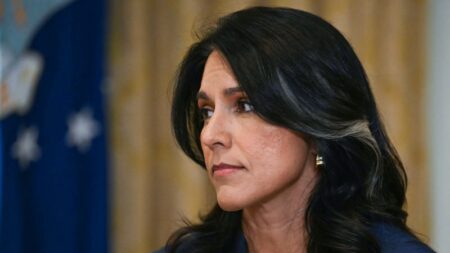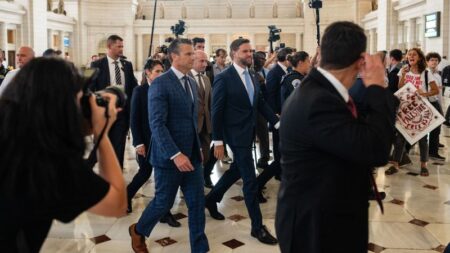In recent developments concerning U.S. military procurement, Defense Secretary Pete Hegseth and Qatar’s Deputy Prime Minister, Saoud bin Abdulrahman Al-Thani, signed a memorandum of understanding (MoU) that solidifies the unconditional donation of a Boeing jet to the Pentagon. This historical agreement, finalized on July 7, marks a significant milestone, confirming that the United States government will incur no costs for the aircraft, a piece of vital information revealed through a copy of the memorandum reviewed by CNN. The jet in question is being prepared for use by the President of the United States, specifically designated as Air Force One after it has undergone the necessary upgrades.
The MoU outlines that this donation is made in good faith, aimed at fostering cooperation and mutual support between Qatar and the United States. A notable clause in the document specifies that this agreement is free from interpretations of bribery or undue influence, which has been a matter of concern given the political sensitivities involved. The text highlights that the donation is completely separate from any governmental decisions, ensuring that there is no intended influence on past, present, or future official acts by either party.
However, while the MoU was signed, it may still undergo changes prior to a final announcement, suggesting that some discussions are still actively taking place regarding the details of this transfer. At the present moment, the aircraft remains at a location in San Antonio, Texas, awaiting its necessary modifications before it can officially be recognized as the new Air Force One. The Air Force and the Qatari Embassy have been approached for comments, but no response has been made public as of yet.
The timing surrounding the transfer of the jet has been tumultuous, inciting a political outcry earlier this year as members from both major political parties raised ethical concerns regarding the donation. Even as some Republicans allied with President Donald Trump expressed reservations, the administration’s defense of the donation pivoted around its characterization as a “gift” that is “free of charge.” This rebranding of the aircraft’s status drew both immediate interest and skepticism from the public and media.
Furthermore, the U.S. Air Force found itself taken aback by the sudden nature of the aircraft donation. Initially, military officials were under the impression that any potential agreement with Qatar would involve a sale of the aircraft. The expectation of a purchase rather than a gift signifies a significant shift in procurement procedures that typically involve formal negotiations and financial transactions. This change came to light as Trump actively promoted the plane as a no-cost acquisition—an assertion that was later highlighted in public discussions.
The signed memorandum emphasizes the unconditional nature of this gift and seeks to mitigate any potential fallout by explicitly stating that no governmental decisions are associated with the transfer. Despite the legal framework surrounding this donation, serious questions arise regarding the logistics involved in retrofitting the aircraft with the essential security and communication equipment required for it to function as a presidential aircraft.
To facilitate these upgrades, sources indicate that the Air Force plans to transfer funds—estimated to be several hundred million dollars—from the critically over-budget Sentinel program, which is focused on developing a land-based intercontinental ballistic missile system, to support the modifications needed for the donation aircraft. Although the final cost of retrofit remains classified, estimates suggest that costs could amount to less than $400 million. An addendum to the agreement indicates that the Air Force is diligently working on the transfer of registration, with immediate action to initiate the required modifications.
In conclusion, the donation of this aircraft from Qatar represents a notable procurement initiative with numerous ramifications beyond its face value. It raises questions about ethical considerations, refurbishing complexities, and long-term financial implications for military budgets. As discussions continue and the aircraft undergoes modifications, both the operational efficiency and political narrative surrounding this event will likely remain in the spotlight.











